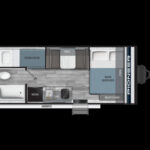Pioneer Cd Players are celebrated among audiophiles for their robust build quality, which often translates to superior sound performance. While “best sound quality” can be subjective, it is undeniably linked to the meticulous engineering and construction found in certain Pioneer models. This article delves into the hierarchy of Pioneer CD players renowned for their exceptional build, guiding enthusiasts toward models that stand the test of time and deliver an unparalleled listening experience.
When assessing the build quality of Pioneer CD players, several models consistently emerge as benchmarks. At the very top of the hierarchy sits the PD-93. This model is widely considered the gold standard, embodying the pinnacle of Pioneer’s engineering prowess in CD player design. Following closely, groups 2-3 include esteemed models such as the PD-95, PD-S95 (transport), and PD-75. These players share a similar level of build excellence, with slight variations placing them in a close tie. Also within groups 2-3 are the PD-91 and PD-73, offering comparable quality and performance, often hinging on individual preferences for their Digital-to-Analog Converter (DAC) implementations – the Pulse 1-bit versus the classic PCM63-K.
Group 4 features the PD-71 and PD-9300, representing a step slightly below the top tier but still boasting impressive construction and sonic capabilities. Group 5 is more diverse, encompassing models like the PD-65, PD-S901, PD-9700, PD-8500, PD-52, and PD-54. While these models may not reach the absolute zenith of build quality found in the PD-93 or PD-95, they are still highly regarded for their robust design and performance, often representing excellent value for discerning listeners. Finally, group 6 includes the PD-7300 and PD-7100, rounding out the list of Pioneer CD players recognized for their commendable build quality.
A key differentiator among these models lies in their Stable Platter Mechanism. The PD-95 and PD-75 stand out as the only models equipped with a truly robust Stable Platter, featuring a substantial aluminum disk, heavy clamps, and powerful motors. While other models may market “stable platter” designs, these often utilize less substantial plastic components. However, it’s worth noting that even these “plastic” stable platter mechanisms in models beyond the PD-95 and PD-75 still perform admirably.
Furthermore, the motors driving these players contribute significantly to their overall build quality and longevity. The PD-95, PD-93, PD-91, and PD-75 are equipped with exceptional ceramic shaft brushless hall motors featuring sapphire bearings, ensuring smooth and reliable operation. Linear carriage motors are also prevalent in many of these high-quality models, excluding only the PD-65 (and its siblings S901, 9700), PD-52, and PD-54. Interestingly, despite not featuring stable platter mechanisms in some cases, models like the PD-65, PD-52, and PD-54 are included in these esteemed rankings due to their incorporation of superb double Pioneer DACs, the 2028. Moreover, many Pioneer CD players, even without the full Stable Platter, utilize excellent magnetic clamps, often sized for 8cm CDs, which securely hold the disc during playback.
For those seeking an entry point into high-quality Pioneer CD players, the PD-65 presents an excellent option. It strikes a balance of performance, build, and accessibility. Its pick-up and motor components are relatively easier to source, and it delivers both appealing sound quality and aesthetics. Models like the PD-8500 and PD-7300 are also highly commendable, user-friendly internally, and often available at reasonable prices, although their relative rarity in some markets and the scarcity of their specific pick-up (shared with the PD-73) should be considered.
Stepping up the hierarchy, the PD-91 and PD-75 represent more premium options. While potentially more expensive, their motors and pick-up units remain available from Pioneer, ensuring future serviceability. At the pinnacle of rarity and cost are the PD-95 and PD-93. The PD-95, particularly, is exceptionally rare in some regions like the United States, where its sibling, the S95 transport, was more commonly available.
For enthusiasts interested in silver-finished models, European markets offer a wider selection, often including Sxxx silver models. While many of these may feature plastic stable platters and less sophisticated internal components, discerning buyers may uncover gems like the silver PD-77, which shares similarities with the PD-75, including Legato Link Conversion, but typically without balanced outputs.
Pioneer also produced excellent multi-disc CD changers. Models like the PD-M92 and M910 are highly regarded, with the M95 considered on par with the single-disc PD-65 in terms of quality. However, as changers inherently possess more complex mechanisms, potential buyers should anticipate a slightly reduced level of long-term reliability compared to single-disc players.
Ultimately, the selection of a Pioneer CD player depends on individual priorities and budget. Whether opting for the readily available and excellent PD-65, or pursuing the ultimate build quality of a PD-93 or PD-95, exploring these models provides a journey into the legacy of Pioneer’s commitment to audio excellence. Consulting with experienced enthusiasts, such as those mentioned in the original discussion, can further refine your understanding and guide you towards the perfect Pioneer CD player for your listening needs.

